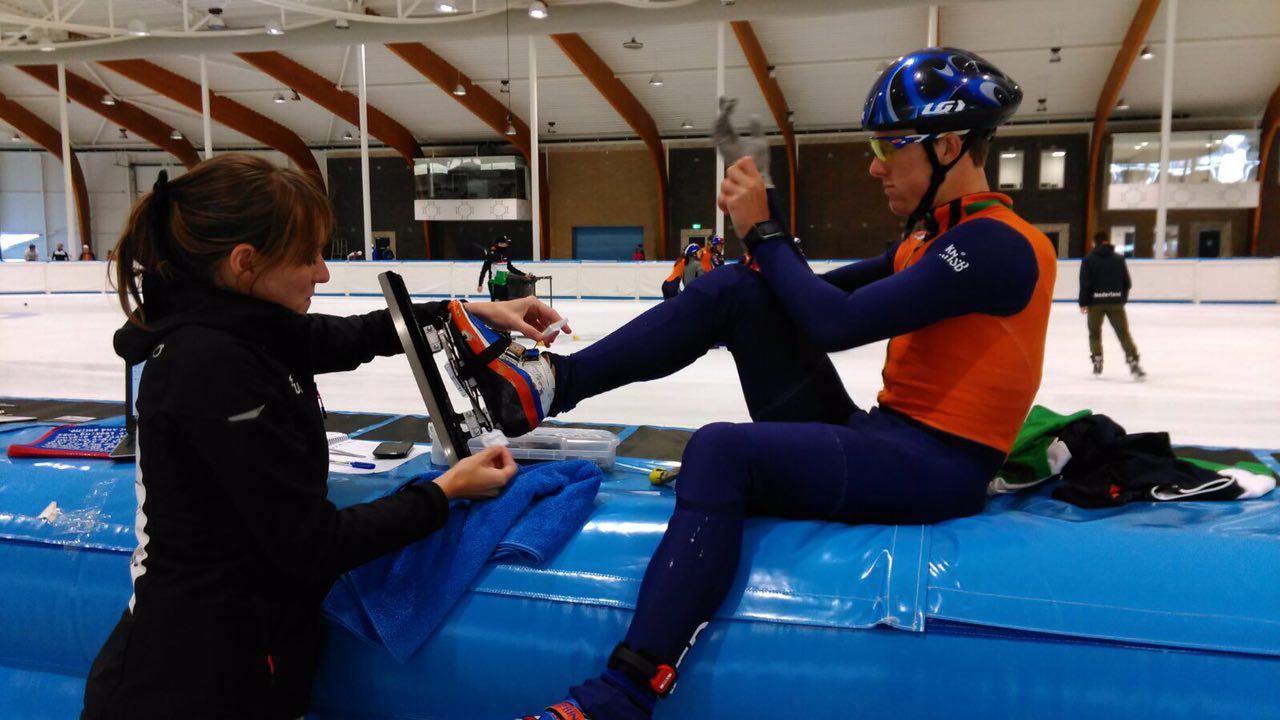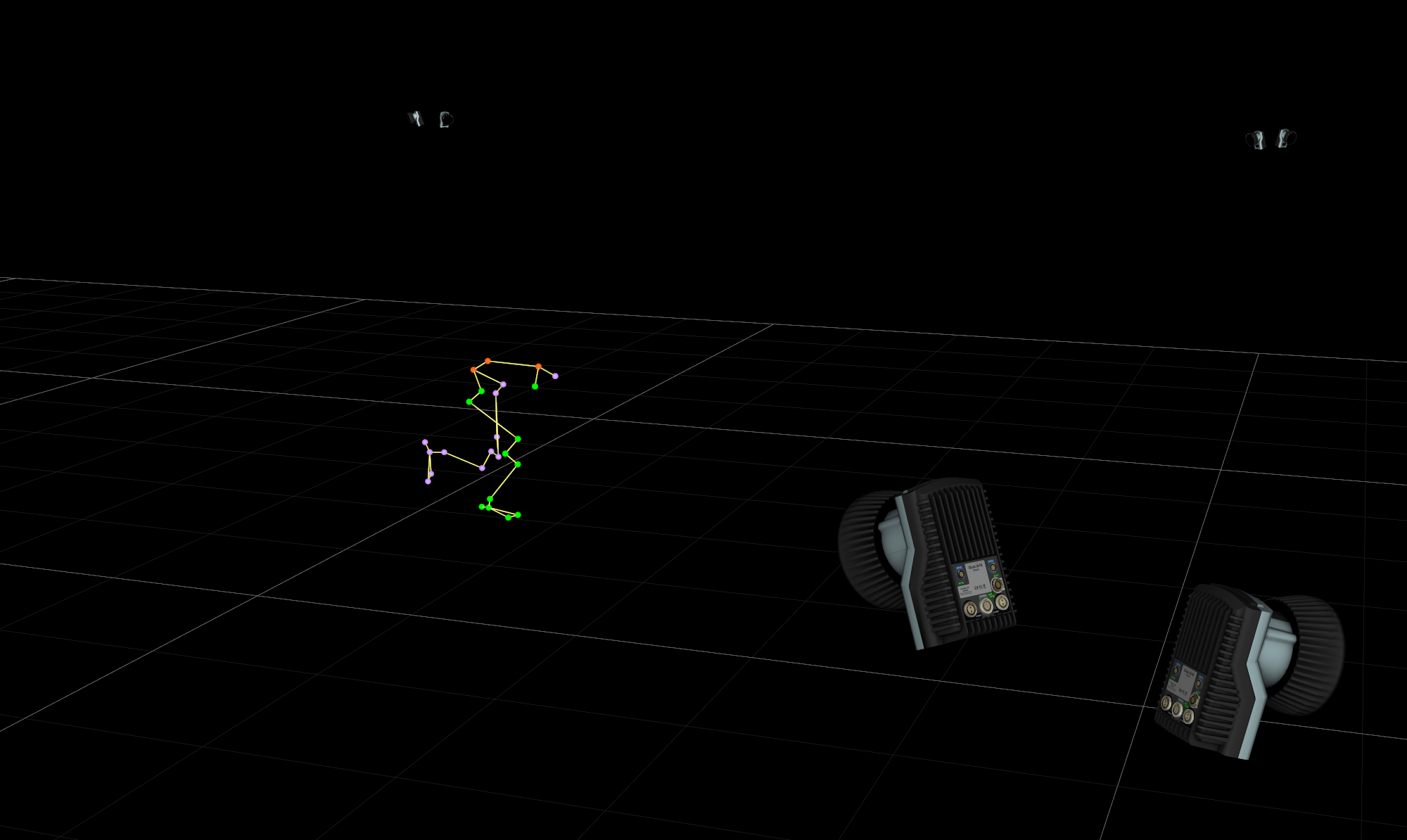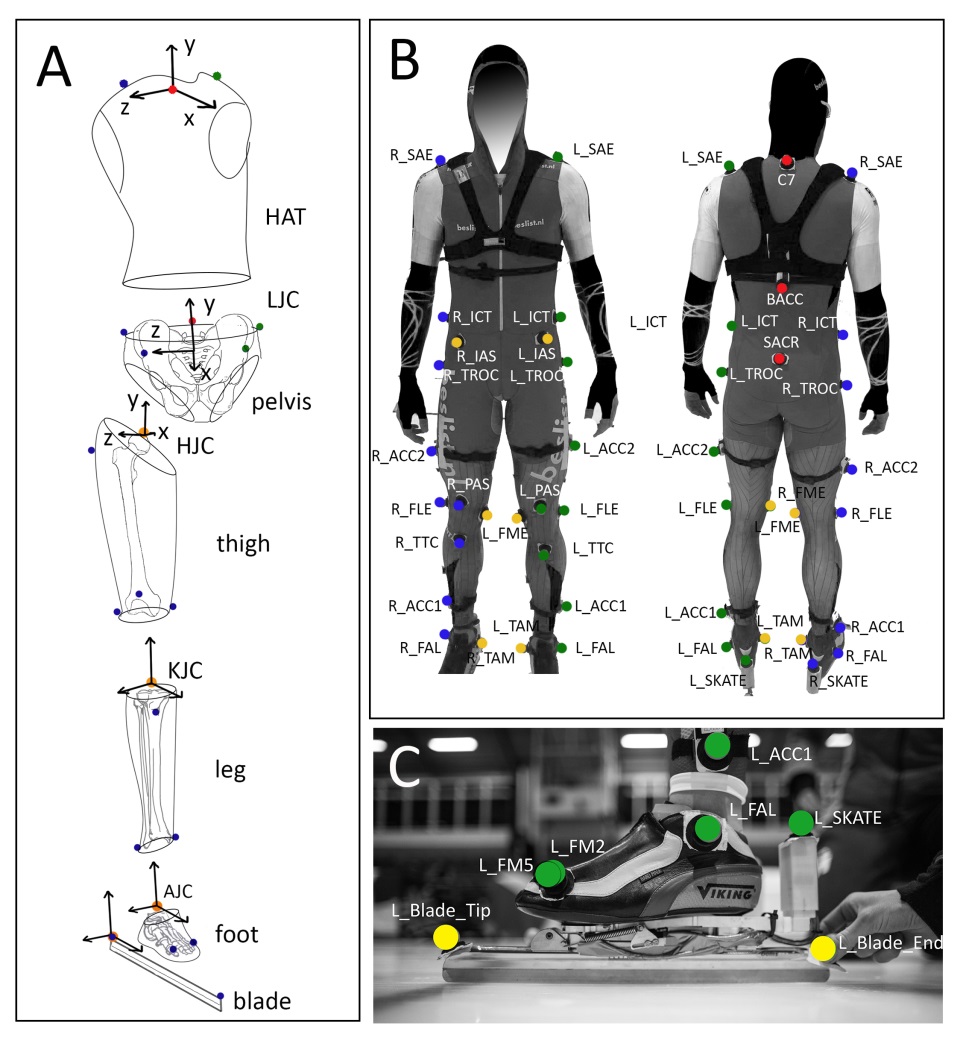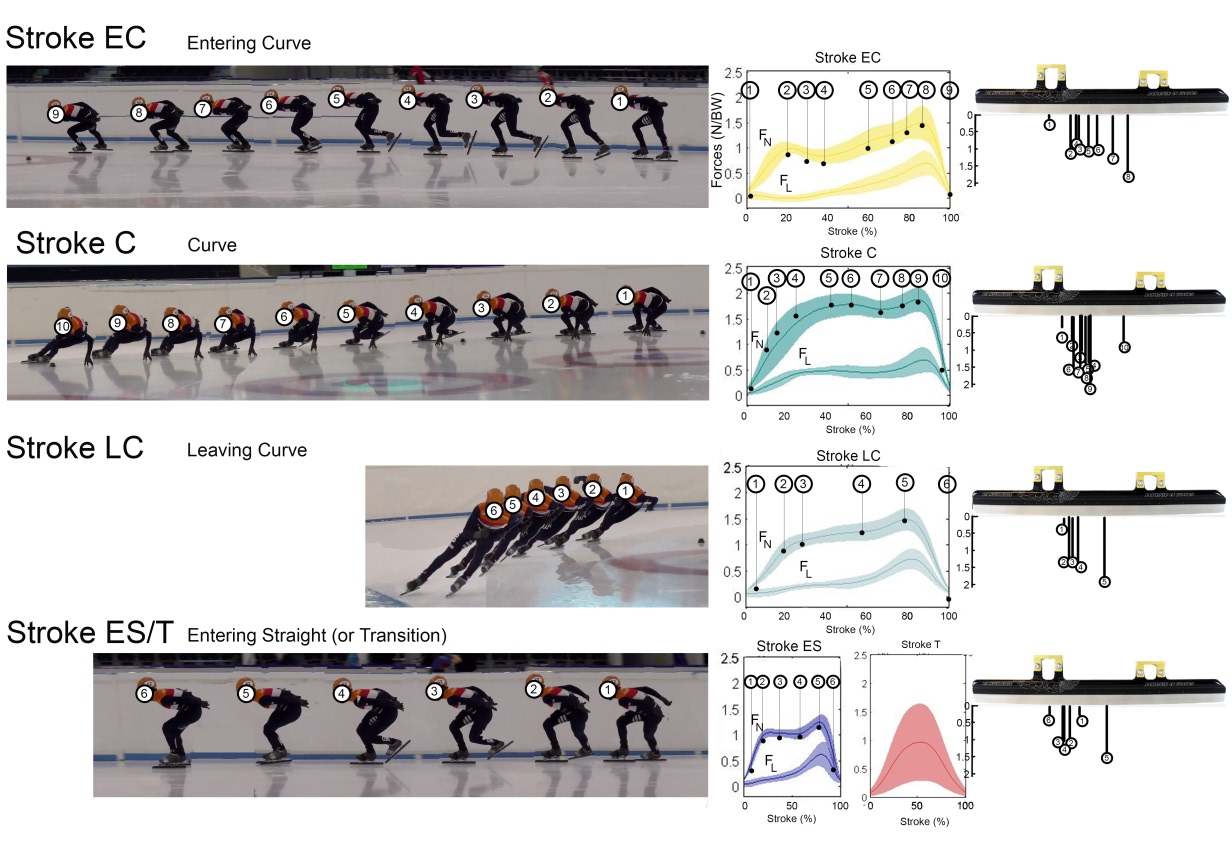In her search to determine the optimal speed skating technique, doctoral candidate Eline van der Kruk developed a dynamic computer model of a skater and instrumented clap skates. In the future, these will make it possible to offer skaters and coaches real-time visual feedback during training sessions. On Thursday 8 February, the day before the start of the Winter Olympics, Van der Kruk will be awarded her PhD at TU Delft for her work on this subject.
Time-honoured
‘Speed skating has been around for centuries, but the optimal skating technique has still not been determined,’ explains Eline van der Kruk. ‘The skating movement involves numerous parameters, and there also appear to be various optimal techniques for different speed skaters. This means that trainers have to spend a long time ascertaining what the optimal technique is for the individual speed skater.’
Part of Van der Kruk’s research involved collaboration with top-class professional long-track and short-track speed skaters. ‘We first wanted to determine how the parameters within a skating stroke are linked by measuring and modelling the skating movement. This knowledge can ultimately be used to provide direct feedback during a training session. We developed and validated a 3D biomechanical model of a speed skater and developed new instrumented clap skates, which can accurately measure the push-off forces generated by a skater.’

Instrumented skates
The instrumented clap skates developed at TU Delft continuously and synchronously measure the push-off forces of a skater on the ice. ‘Skaters can use their own skating boot and blade during testing.’ The data is then wirelessly transmitted to other systems. In the future, this will make it possible to offer skaters and coaches real-time visual feedback during training sessions.’
In addition to the feedback and measurement systems for long-track skating, the new expertise has also made its way into the short-track discipline. In collaboration with the Dutch speed skating federation, national coach Jeroen Otter, and the Hague University of Applied Sciences, a wireless instrumented skate has also been developed to measure the push-off forces of short-track skaters.

Valuable initial step
In general, accurately measuring aspects of skating movement – for example, the so-called steering angle – has proven to be very difficult. One of Eline van der Kruk’s conclusions is that creating 3D recordings of moving skaters with the necessary level of precision is more complex than initially thought. ‘Accurately measuring the position and speed of every part of a moving skater on an ice rink is a real challenge, partly because of the large volume of a single stroke. For the moment, it is a question of waiting for new technological developments in the field of sensor technology. Nevertheless, I believe that my research represents an extremely valuable initial step in this direction.’

‘The measurement issues arose when we wanted to determine the position and speed of the skater’s centre of gravity and each skate with great precision (<20mm) in 3D during a full lap of the entire track. Our quest eventually resulted in us measuring a volume of 50 metres. This is no way near sufficient to conduct continuous, accurate measurements on the 400-metre track, but it did produce an extraordinary data set that enabled us to validate our computer model and determine the precision required for measurement instruments in order to offer reasoned recommendations regarding the optimal skating stroke.’

New strokes
‘It turns out that our model is able to produce a good simulation of the skating movement, allowing us to begin determining the most important parameter(s) in a stroke. The steering angle proved to be of primary importance. We can now also use the computer to search for a range of strokes to help us determine the optimal skating stroke for individual speed skaters, accounting for differences in the individual skater’s size, leg length and strength. So we can already use this model to search for skating movements that are better in terms of physics, or even new skating movements. The next step is to adjust the optimisations in such a way that only strokes are found that are realistic options for the individual skater.’
‘Another challenge that still needs addressing is that a measurement system is yet to be developed that can measure the position and orientation (steering angle) constantly and with sufficient precision during a full lap of the track. That is why, for the time being, we are not in the position yet to teach the stroke selected by the computer to skaters using real-time feedback through glasses.’

Symposium: technology in winter sports
On 8 February, the day upon which Van der Kruk will defend her doctoral dissertation, the TU Delft Sports Engineering Institute will be organising a symposium focusing on research in the field of winter sports (open to the public).
More information
Doctoral dissertation of van der Kruk, E. (2018). Parameter analysis for speed skating performance DOI: 10.4233/uuid:70679175-8672-42e4-88dc-dfe927448596
Lecture of Eline van der Kruk in ‘de Universiteit van Nederland’ (in Dutch)
The documentary ‘Start the Future’ about the instrumented skates (in Dutch)
More about the research of Eline van der Kruk
Contact
Eline van der Kruk, E.vanderKruk@tudelft.nl
Claire Hallewas (media relations officer TU Delft), C.R.Hallewas@tudelft.nl, +31 (0)6 40953085
